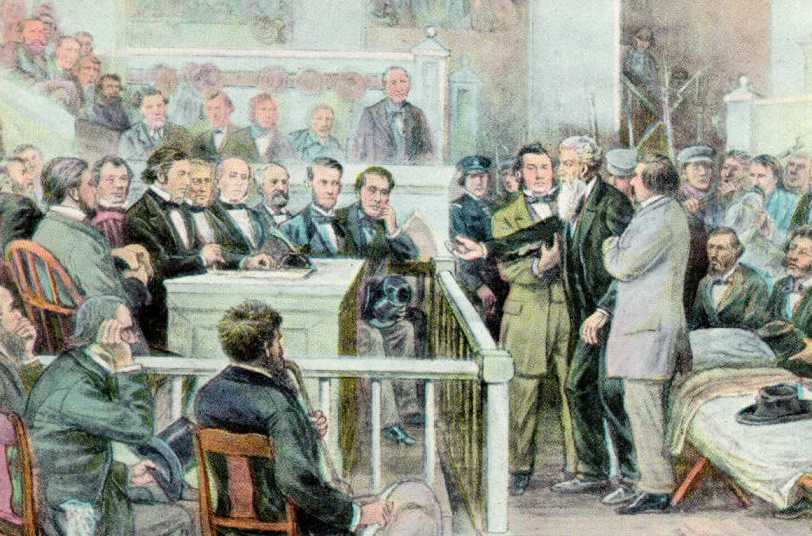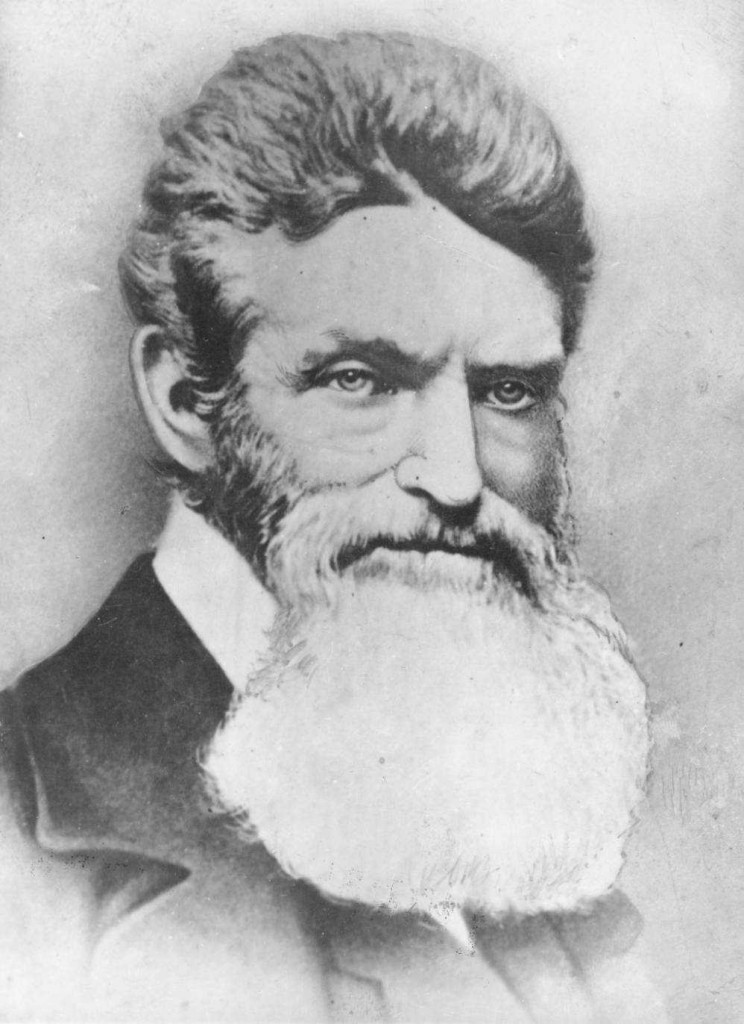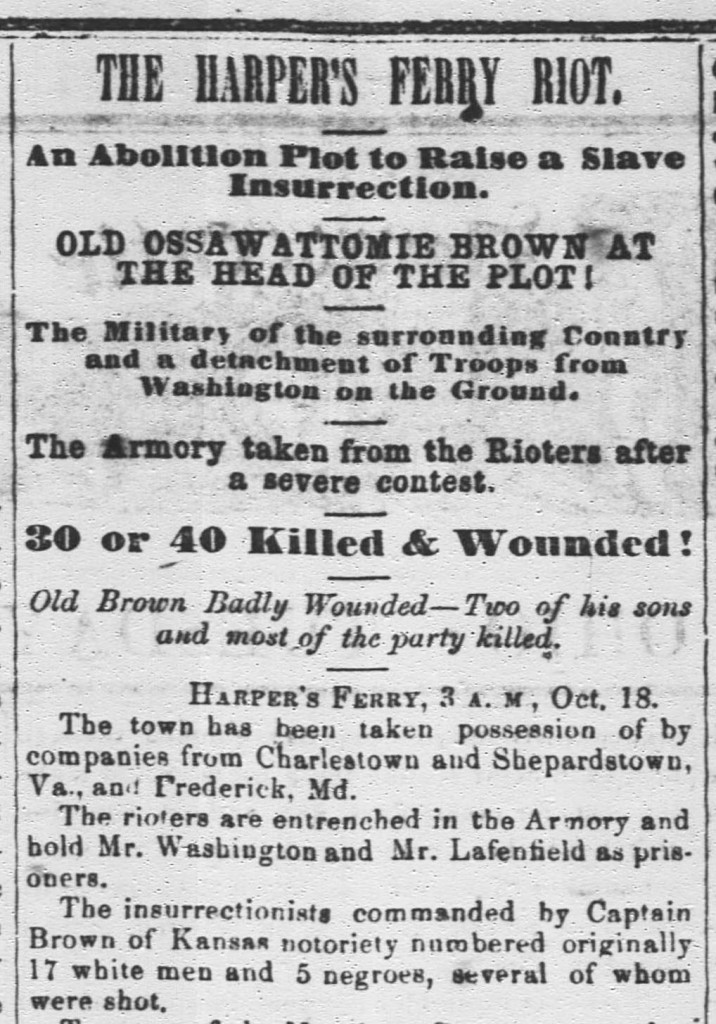“The Affair at Harper’s Ferry”


In the middle of the night on October 16, 1859, twenty-one men led by militant abolitionist John Brown made their way into the town of Harper’s Ferry, Virginia (now West Virginia). Their goal? Capture the town’s federal arsenal and incite a rebellion among the state’s slaves, which they hoped would lead to a radical overthrow of the inhuman institution of American slavery throughout the Southern states. John Brown was a vehement opponent to slavery who, after spending part of his youth in Ohio, went on to serve as a conductor on the Underground Railroad, and to settle for a time in Kansas, where he was involved with the series of events for which the newly-created territory came to be known as “Bleeding Kansas.” But he gained national attention and enduring fame in 1859 with his raid of Harper’s Ferry.
With a force of twenty-one men (three of whom remained back as a rear guard), Brown and the raiders succeeded in overpowering the watchmen and capturing the arsenal, but armed locals soon surrounded the buildings. They trapped the abolitionists–those who had not fled, been killed or been captured– inside, where they remained through the following day and night. A detachment of U.S. Marines arrived and stormed the arsenal on October 18, capturing seven men, including Brown.

Over the course of that day and a half raid, Brown and his force had killed four men and wounded ten, but had lost ten of their own number, including two of Brown’s sons. The state of Virginia charged Brown with murder, conspiracy, and treason–a common charge against those who encouraged or led slave rebellions in slave states. The court found Brown guilty and sentenced him to death. On December 2, 1859, Brown was hanged. Six of his fellow raiders soon met the same fate.
Many historians view the raid at Harper’s Ferry as one of the preliminary skirmishes of the Civil War, and it is widely-recognized as one of the major events that helped to inflame tensions between slave states and free states. In an 1881 address given by writer, anti-slavery reformer, and former slave Frederick Douglass, he even credited Brown with “[beginning] the war that ended American slavery and made this a free Republic.” Newspapers of the time covered this important and divisive story heavily, including profiles of Brown and detailed breakdowns of the events of the raid. Explore the Ohio State Journal and Civil War-Era Newspapers of Mount Vernon to see more contemporary coverage of this controversial piece of history! We hope you’ll also take a look at the additional materials in Ohio Memory related to John Brown and the Harper’s Ferry raid, including lecture posters, letters written by Brown, and even a lock of hair fromEdwin Coppoc, one of the executed co-conspirators.
Thanks to Lily Birkhimer, Digital Projects Coordinator at the Ohio History Connection, for this week’s post!



Leave a Reply
You must be logged in to post a comment.